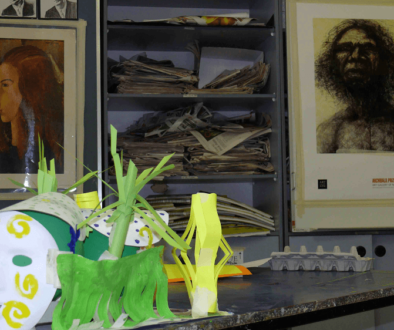Art Therapy: Definition, Types and Techniques
The Healing Brushstrokes of Art Therapy
In a world where words often fall short, art therapy shines brightly as a transformative form of expression. It is not just a method of healing; it is a compassionate journey that taps into the creative spirit within us all. Through the power of artistic creation, art therapy delves deep into the human experience, offering a vibrant visual language for communicating feelings that often elude words. Let us embark on an inspiring exploration of art therapy, delving into its definitions, diverse types, and transformative techniques.
Defining Art Therapy
Art therapy transcends mere creation; it is a profound therapeutic approach that intertwines psychological theories with artistic processes, unveiling new paths for emotional expression and healing. It provides a sanctuary where individuals can explore their innermost thoughts and feelings, achieving personal growth through the rich tapestry of visual and symbolic communication. Unlike traditional art, which may often prioritize aesthetics, art therapy celebrates the beauty in the creative process itself—highlighting the emotional journey and the breakthroughs that occur as one engages in self-expression. It’s not about crafting a masterpiece; rather, it’s about embracing the deeper-seated emotional landscape one navigates throughout the creative experience by making the unconscious content conscious.
Types of Art Therapy
Art therapy is a versatile field that encompasses a wide range of forms, each tailored to meet individual needs and preferences, including:
- Drawing and Painting: One of the most familiar approaches is using pencils, crayons, or paint to bring forth the client’s inner world. Choices in colour, line, and texture reveal profound emotional states.
- Sculpture and Clay Therapy: Engaging with three-dimensional materials like clay offers a grounding experience that connects individuals to their emotions, often symbolising personal transformation.
- Collage: By assembling cutouts from magazines or photographs, individuals create visual narratives that express complex feelings, making it easier to articulate difficult emotions.
- Photography and Digital Art: In this digital age, new mediums open exciting channels for expression, where manipulation and editing reflect personal control over one’s narrative.
- Music and Movement Therapy: Integrating auditory and kinesthetic elements brings a holistic dimension to the creative experience, enlivening the therapeutic process.
Techniques in Art Therapy
The techniques employed in art therapy are as diverse as the art forms themselves. Here are a few compelling examples:
- Free Association: Clients are encouraged to create freely without specific goals, allowing their unconscious thoughts, emotions and experiences to manifest on the canvas.
- Mandala Creation: The meditative process of drawing or colouring mandalas promotes mindfulness and helps individuals connect with different facets of their identity.
- Art Journaling: Keeping a visual diary allows individuals to record their experiences, emotions, and thoughts not only in words but through sketches and doodles, fostering a dialogue with oneself.
- Therapeutic Storytelling through Art: Crafting a narrative through a series of images provides a cathartic outlet for processing trauma and life changes, encouraging healing through creative storytelling.
- Body Mapping: Creating an outline of one’s body and filling it with colours and symbols that represent sensations or emotions invites a deeper understanding of the self and one’s experiences.
The Inspirational Aspect of Art Therapy
The true beauty of art therapy lies in its universal accessibility. You do not need to be an accomplished artist to reap the benefits; you simply need to embrace your humanity and willingness to explore your innermost self. Each brushstroke and colour choice becomes an empowering step towards self-discovery and growth. Art therapy teaches us that healing can come not only from conversations but also from the act of creating—from allowing our hands to echo the sentiments of our hearts.
In conclusion, art therapy is a profound testament to the resilience and creativity of the human spirit. It goes beyond mere artistic expression; it offers a lens through which we can interpret our inner worlds. Whether navigating life’s challenges or seeking a deeper connection with oneself, art therapy provides a canvas for the soul to inscribe its unique narrative. Would you like to become an art therapist?
We invite you to view all the courses we offer at our Virtual College.
Enrol in one of our courses within minutes and get started on the course content immediately. Complete the entire course on this virtual platform … or download the course in PDF format if preferred.
Enjoy the smooth and engaging learning experience we’ve designed for you.




